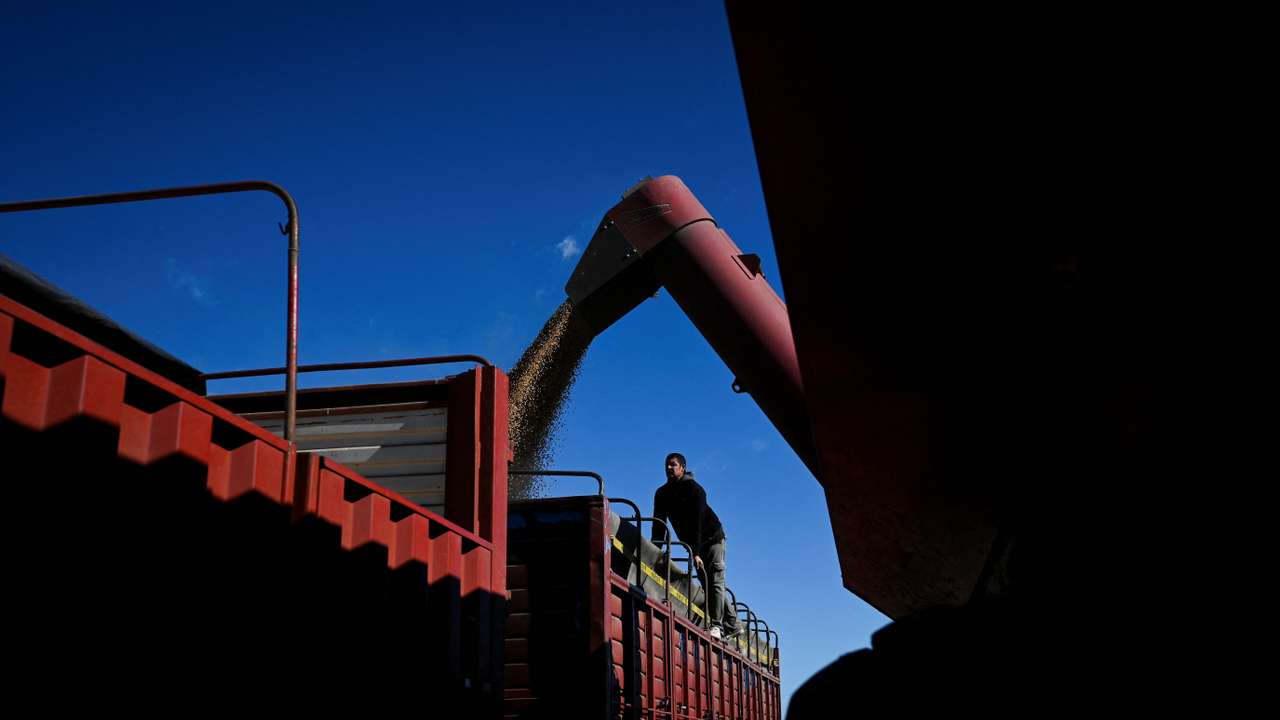Argentina's soy farmers race ahead with harvest to beat the rains

By Maximilian Heath
On Cristian Giacobone's farm in the heart of Argentina's Pampas plains, workers in the soy fields have been up since dawn, racing to harvest the rain-delayed crop before the arrival of new storms that will make threshing more difficult.
The soy crop, the main export of the South American country's embattled economy, has been delayed by unusually strong rains, weighing on sales of the oilseed that are running at the slowest pace in some 11 years.
Now, with a window of dry weather - but with more rains forecast - farmers are speeding up their operations.
"We have a very small harvest window," Giacobone said from his 60-hectare (148-acre) soy field in San Andrés de Giles, about 100 km (62 miles) west of Buenos Aires.
"The weather conditions from February until now have seen persistent rains," he added, citing an accumulated rainfall of almost 580 mm (22.83 inches). "This was the main reason for delays, due to soil conditions both in and out of the fields."
Argentina is the world's top exporter of soy oil and meal, with soybean production this season estimated at 50 million metric tons by the Buenos Aires Grains Exchange. The indebted country needs soy dollars to replenish depleted foreign currency reserves.
But the delays have raised fears the harvest could end up lower due to the impact of fungi or the opening of soy pods in the plant, turning every dry hour into gold for farmers, who are even harvesting in muddy fields, at the expense of compacting the soil and making future planting difficult.
"What the producer is doing is making the decision to leave early in the morning, rather than wait for the grains to dry out and extend the day's work despite higher costs," Giacobone said.
Typically, farmers go out with combine harvesters later in the day when grain moisture level is lower to avoid additional drying costs.
'RAINS CONTINUE'
The slow harvest has hit Argentina's soy sales in the 2024/25 season, with the slowest pace in over a decade, with only 28.7% of the oilseed sold through May 7, according to official data, well below the 10-year average of 36.1%
In Giacobone's field, the combine harvesters comb the last rows of soybeans, taking advantage of sunny weather that began on Saturday, allowing the restart of farm work that had been halted last week by several days of rain.
The respite gave farmers time to speed up harvesting, bringing in nearly 65% of the area planted with the crop so far, the Buenos Aires Grains Exchange said in a Thursday report.
That remains five percentage points behind the five-year average.
However, amid the conditions of the El Niño weather phenomenon — that causes higher than normal rainfall in Argentina — more rains are expected in the days ahead.
"The rains continue," Eduardo Sierra, a climate specialist at the Buenos Aires Grains Exchange, told Reuters.
"We see a front coming that could bring very strong storms," the expert noted, adding that the rainfall could extend until Sunday.
Sierra added that June could also be a rainy month.
In San Andres de Giles, the country roads still bear the muddy marks of the wet Southern Hemisphere autumn that has spurred producers to wrap up the harvest campaign as soon as possible.
"Our current strategy is this: to ensure that the soybeans ... are protected," said Giacobone, who is also president of the area's rural society.
"We're somewhat fearful of all these rains and these days where the weather won't let us work."
This article was produced by Reuters news agency. It has not been edited by Global South World.